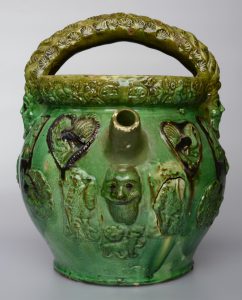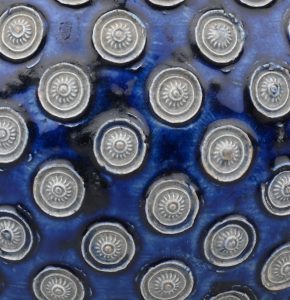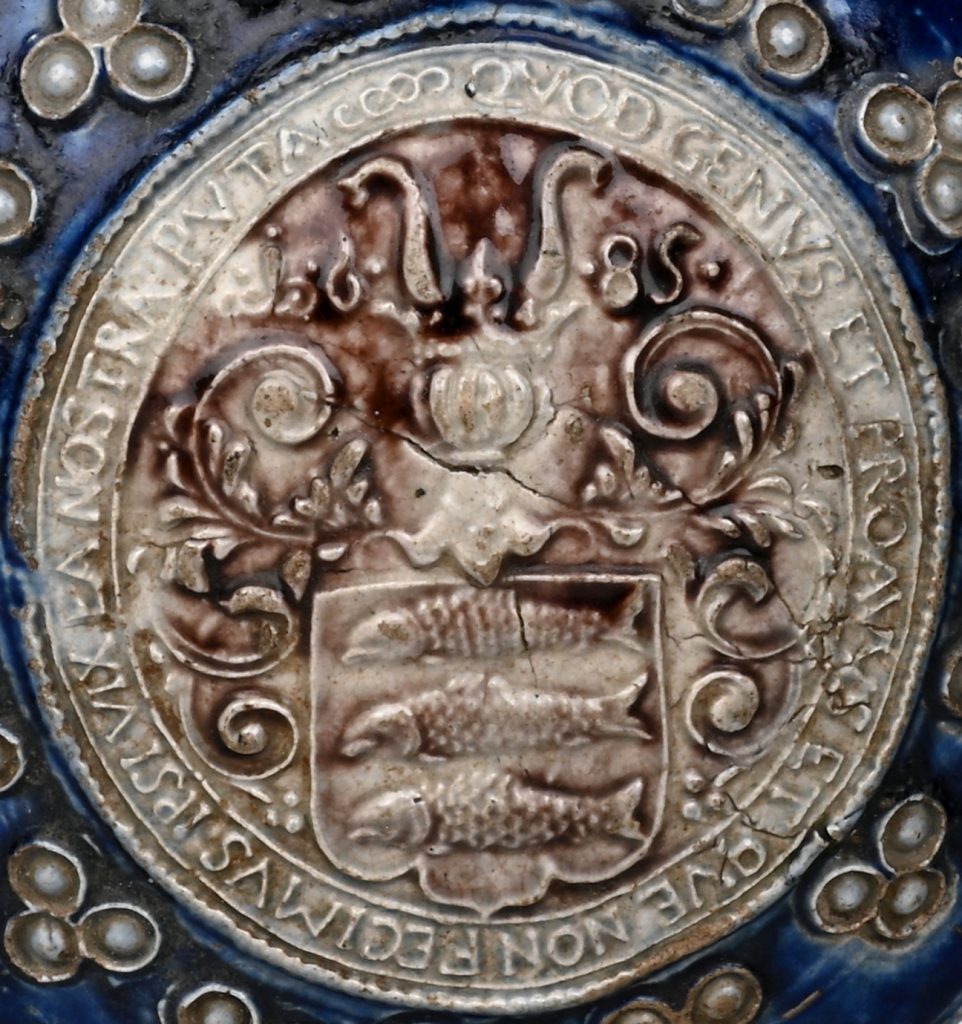

Three-dimensional shapes applied to the surface of vessels were used on all types of pottery, but were particularly popular on earthenware, refined industrial wares and stoneware. The decorative elements, or sprigs, were free-formed by hand or mould-pressed in clay or plaster and then applied to the surface of greenware or biscuit-fired vessels using clay slurry. Sprigs were usually flat and came in a variety of shapes (round, oval, rectangular, oblong etc.).

The larger and more elaborate sprigs, found mainly on European stoneware from the Renaissance and Baroque periods (e.g. from the pottery centres in Siegburg, Raeren, Westerwald), were sometimes signed or dated by the mould maker. Strictly speaking, these dates refer to the sprigs themselves rather than the vessel, since the moulds were sometimes used and reused over relatively long periods of time. In such cases we would say that the vessel is dated by the sprig or sprig-dated.
Translation Sandy Haemmerle
German: Auflagendekor (Reliefauflagen)
French: Décor en relief, décor d’appliques

